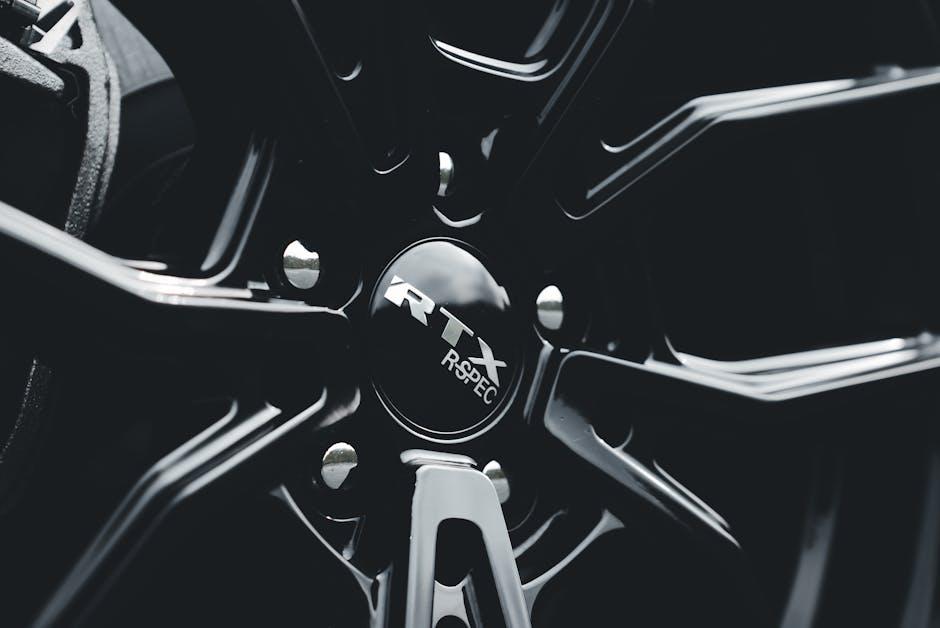When it comes to vehicle maintenance, oil plays the silent yet indispensable role of keeping your engine running smoothly. But what happens when you’re considering a change—switching from one type of oil to another? Whether driven by seasonal shifts, performance needs, or simply curiosity, the idea of switching oil types raises questions about compatibility, benefits, and risks. In this article, we explore the nuances behind oil types, diving into whether you can—and should—switch them, helping you make informed decisions for your engine’s health and longevity.
Table of Contents
- Understanding the Basics of Different Motor Oil Types
- How Engine Compatibility Influences Your Oil Choice
- Benefits and Drawbacks of Switching Between Conventional and Synthetic Oils
- When Is It Safe to Change Oil Types Without Damaging Your Engine
- Tips for Properly Transitioning to a New Oil Type
- Expert Recommendations for Maintaining Engine Health After Switching Oils
- Q&A
- In Conclusion

Understanding the Basics of Different Motor Oil Types
Motor oil is more than just a lubricant; it’s the lifeblood of your engine, ensuring smooth operation under various conditions. At the most basic level, oils are classified into conventional, synthetic blend, and full synthetic. Each type offers distinct benefits tailored to specific engine needs and driving styles. For example, conventional oils are budget-friendly and suitable for low-mileage engines, while synthetic oils provide superior performance under extreme temperatures and heavy loads thanks to their uniform molecular structure.
When switching between these oils, understanding their key differences is crucial. Consider the following characteristics:
- Viscosity: Thickness and flow resistance, often indicated by numbers like 5W-30.
- Additive Packages: Enhance protection against wear, corrosion, and sludge.
- Cost and Longevity: Synthetic oils generally cost more but last longer and maintain stability better.
| Oil Type | Typical Usage | Benefits | Considerations |
|---|---|---|---|
| Conventional | Everyday driving | Affordable, easy to find | Shorter change intervals |
| Synthetic Blend | Moderate performance | Improved protection, cost-effective | Balanced longevity and price |
| Full Synthetic | High-performance, extreme conditions | Optimal flow, reduced engine wear | Higher upfront cost |

How Engine Compatibility Influences Your Oil Choice
Choosing the right oil for your vehicle hinges significantly on the engine’s design and specifications. Modern engines often demand specific oil viscosities and formulations to ensure optimal performance and longevity. When an oil isn’t compatible, it can lead to inefficient lubrication, increased wear, or even damage due to incorrect flow characteristics or additive mismatches. Compatibility considerations include:
- Engine type (diesel vs. gasoline)
- Manufacturer’s recommended viscosity grade
- Presence of turbochargers or superchargers
- Emissions system requirements (like particulate filters)
- API and ACEA standards compliance
To visualize the impact, consider this comparison table for common engine types and their recommended oil attributes:
| Engine Type | Recommended Oil Viscosity | Key Oil Additives Needed | Performance Impact if Mismatched |
|---|---|---|---|
| Gasoline Naturally Aspirated | 5W-30 / 10W-40 | Anti-wear, detergents | Reduced efficiency, sludge build-up |
| Turbocharged Gasoline | 0W-20 / 5W-30 | Thermal stability, antioxidants | Turbo damage, oil breakdown |
| Diesel with DPF | 5W-30 CK-4 / 0W-30 | Low ash, soot control | Filter clogging, emissions failure |

Benefits and Drawbacks of Switching Between Conventional and Synthetic Oils
Switching between conventional and synthetic oils can bring both advantages and challenges. One of the main benefits is cost flexibility: synthetic oils offer superior engine protection and performance, but conventional oils are often more budget-friendly. This flexibility allows drivers to adapt their oil choice based on driving conditions, budget, and vehicle demands. Additionally, synthetic oils can improve fuel efficiency and reduce engine wear, especially in extreme temperatures, while conventional oils provide reliable lubrication for everyday driving without breaking the bank.
On the downside, switching oil types frequently might cause confusion over product compatibility and oil life expectations. Some vehicles require specific oil formulations, and mixing oils without proper guidance might reduce overall performance or even risk engine health. Common concerns include:
- Residue buildup: Synthetic oils sometimes leave behind additives that differ from conventional oils, potentially leading to sludge if not properly flushed.
- Warranty considerations: Some manufacturers recommend sticking to one oil type to avoid voiding warranties.
- Oil change intervals: Synthetic oils offer longer intervals, so switching back to conventional might increase maintenance frequency.
| Factor | Conventional Oil | Synthetic Oil |
|---|---|---|
| Cost | Lower | Higher |
| Engine Protection | Basic | Enhanced |
| Oil Change Frequency | Every 3,000-5,000 miles | Every 7,500-10,000 miles |
| Temperature Performance | Moderate | Excellent |

When Is It Safe to Change Oil Types Without Damaging Your Engine
Switching oil types, such as moving from conventional to synthetic or vice versa, is generally safe when done thoughtfully. The key is to ensure that the engine’s compatibility with the new oil type is respected. Modern engines are designed to tolerate a range of oils, but always check your owner’s manual for manufacturer recommendations. If you’re transitioning between oil types, aim to do so during a regular oil change to flush out the old oil completely and avoid mixing oils with drastically different chemical characteristics.
Factors that influence the safety of switching oils include:
- Oil Viscosity: Keep the same viscosity grade unless advised otherwise by your mechanic or manual.
- Engine Condition: Older engines with leaks or wear may require specific oil types.
- Driving Conditions: Severe environments might call for specialized synthetic blends.
- Oil Quality: Stick to oils meeting or exceeding your vehicle’s industry standards.
| Scenario | Recommended Approach |
|---|---|
| Switching from Conventional to Synthetic | Change oil and filter completely; check for leaks |
| Switching within Synthetic Brands | Mixable but flush preferred for best performance |
| Switching with Different Viscosity | Consult manual; gradual change recommended |

Tips for Properly Transitioning to a New Oil Type
When switching to a different oil type, it’s essential to proceed thoughtfully to safeguard your engine’s performance and longevity. Start by checking your vehicle’s owner’s manual to ensure compatibility with the new oil grade or formulation. Flushing the engine is not always necessary, but if you’re moving between drastically different oil bases, such as synthetic to conventional or vice versa, consider a mild engine flush to remove residual old oil and contaminants. Always use a high-quality oil filter during the transition, as it plays a crucial role in maintaining oil purity and protecting internal components.
To make the transition smooth, adopt these simple practices:
- Warm up the engine before draining; this allows the oil to flow out easier and remove impurities.
- Monitor oil levels closely over the first few hundred miles, topping off if necessary.
- Observe engine performance and fuel efficiency for any irregularities.
- Schedule an oil and filter change after a short break-in period to remove any leftover contaminants stirred up by the new oil.
| Step | Best Practice |
|---|---|
| 1 | Consult manual for recommended oil types |
| 2 | Warm up engine before oil change |
| 3 | Use compatible oil filter |
| 4 | Watch for leaks or unusual noises |

Expert Recommendations for Maintaining Engine Health After Switching Oils
After you switch oil types, ensuring your engine adapts smoothly is crucial to preserving its performance and longevity. First, give your engine a thorough warm-up during the initial drive to help the new oil circulate and coat all engine components effectively. Avoid aggressive driving until the new oil has had time to settle in, as this can cause unnecessary stress on engine parts still adjusting to the change. Monitoring oil levels closely during the first few weeks post-switch is also essential to catch any unexpected leaks or oil consumption variations early.
Maintenance routines should be slightly adjusted following an oil type change. Consider these expert tips to keep your engine in top condition:
- Use quality oil filters compatible with the new oil type to maximize filtration efficiency.
- Schedule more frequent oil checks initially to monitor for any abnormal discoloration or smell, which could indicate contamination or oil breakdown.
- Log oil changes and observations meticulously; this information is valuable for diagnosing long-term changes in engine health.
| Maintenance Task | Recommended Action |
|---|---|
| Oil Level Check | Weekly for first month |
| Oil Filter Replacement | At next oil change |
| Driving Style | Gentle for initial 300 miles |
Q&A
Q&A: Can You Switch Oil Types?
Q1: Is it safe to switch from conventional oil to synthetic oil?
A1: Yes, it’s generally safe to switch from conventional to synthetic oil. Synthetic oils often provide better engine protection and perform well under extreme temperatures. Just make sure to check your vehicle’s manual and consider the manufacturer’s recommendations.
Q2: Can I switch from synthetic oil back to conventional oil?
A2: You can, but it’s less common and sometimes not advised. Synthetic oils clean your engine thoroughly, which may loosen deposits that could clog passages if you revert to conventional oil. If you decide to switch back, consider an oil and filter change to avoid potential issues.
Q3: What happens if I mix different types of oils?
A3: Mixing synthetic and conventional oils isn’t harmful, but it dilutes the benefits of synthetic oil. Your oil will perform closer to the lower-quality type. For best results, stick to one type between oil changes.
Q4: Are there any precautions when switching oil brands or viscosities?
A4: Yes, it’s important to maintain the recommended viscosity (e.g., 5W-30) for your engine. Switching brands is typically fine since most oils meet industry standards, but always verify the oil meets your car’s specifications.
Q5: How often should I change the oil after switching types?
A5: Follow the oil change interval suggested by your vehicle’s manufacturer. Synthetic oils often allow for longer intervals, but always adhere to your owner’s manual or consult a trusted mechanic for guidance.
Q6: Why might someone want to switch oil types?
A6: Drivers might switch to synthetic oil for improved engine cleanliness, better performance in extreme conditions, or longer oil life. Conversely, switching to conventional oil could be a cost-saving decision or based on specific vehicle needs.
Q7: Should I flush the engine before switching oil types?
A7: An engine flush isn’t typically necessary when switching between oil types unless you’re changing grades or addressing sludge buildup. Consult a mechanic if you suspect engine deposits or disagreeing oil performance.
Switching oil types can be straightforward with the right knowledge. Always check your vehicle’s needs and don’t hesitate to seek expert advice to keep your engine happy and healthy.
In Conclusion
In the end, switching oil types isn’t just a simple swap—it’s a decision that calls for understanding your vehicle’s unique needs and the nuances of different oils. While flexibility exists, informed choices ensure your engine runs smoothly and lasts longer. So, whether you’re topping off or making a permanent change, let knowledge be your guide on the road to optimal performance. After all, the right oil isn’t just about lubrication—it’s about harmony under the hood.

